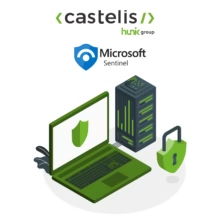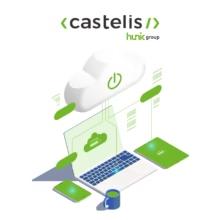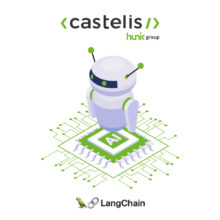
How to design a business application?
The design of a business application helps to meet the specific challenges of the company. Fully adapted to the real needs of the teams, the development of a tailor-made web application offers relevant and efficient functionalities. It simplifies tasks and improves employee productivity. In order to successfully manage its digital transformation, a company must correctly design its business tools, taking into account not only the technical parameters, but also and above all, the human factors. So how do you design a business application?
What is a business application?
A business application is an application that responds to the specific professional needs of a company, often accessible to users from a simple browser because it is developed on a modern web base. This type of custom development offers many advantages:
- Simplification of tasks;
- Automation of user processes and quality control;
- A qualitative work tool for employees which improves productivity;
- A reduction in costs thanks to the automation of repetitive tasks;
- Time savings for staff;
- An exceptional user experience for both customers and employees;
- No unnecessary functionality because it has been designed for a specific business.
The development of a customised web application fits perfectly into the heart of your IS. Indeed, you have certainly already been confronted with the lack of adequacy of a software with the needs of the company. Sometimes the right application simply does not exist, or is only partially adapted to your activities. The absence of a solution on the market is overcome by designing a tailor-made business application.
Designed to simplify the management of company data, this application can be :
- Connected to the company’s network from a distance or on site, depending on the specificities of the company: teleworking, remote access during business trips or face to face.
- Multidevice and responsive (also adapted to mobile use), or even mobile first (priority to mobile use) if necessary.
What are the steps in designing a web application?
Before designing a business application, it is essential to go through a first thinking stage. It would be counterproductive to start developing an application that does not take 100% account of the company’s needs. The development of bespoke business software is complex.
It will have an impact on the company’s overall organisation and its IS. This is why the involvement of the final users of the solution is necessary. It must be easy to use on a daily basis and the interface must be as ergonomic as possible.
Prior to the development process, it is necessary to answer these questions:
- What is the purpose of the web application project?
- What user needs must it meet? Why do you want it?
- What are the features essential to improve the work of your employees?
- For whom is the business application intended? What is the level of digital maturity of the future users? How can the application adapt to this level?
- On what platform will the application be used and in what circumstances? Will it be accessible only on the company network or from any Internet access? Should it be accessible on the go and thereby on different devices with different screen formats?
It is also necessary to draw up technical specifications with the company that will develop the solution. The latter should mention :
- How does the application fully meet the company’s needs? List the functionalities that it must support.
- What strategy will be implemented in the development phase?
- The technical issues to be resolved: how will the application be integrated with third-party tools?
- The hosting mode chosen. An on-premise solution with a server hosted within the company or cloud hosting depending on the specificities of the IS.
- The possible scalability of the application: it must be able to evolve with the company’s needs, which implies making relevant technological choices. Flexibility is recommended. The development of a micro-services architecture or even a cloud native application is generally ideal for obtaining a scalable and modern solution that remains efficient.
The stages of software development follow a precise method that refers to the SDLC, i.e. the software life cycle. Designing a business application requires :
- Ensure that the best possible user experience is created. To do this, the UX (or user experience) must be a priority to ensure that the application is intuitive and effective. The aim is to ensure that the application can be easily handled. In addition, information should be accessible to the user with the fewest clicks possible.
- Benefit from graphic work with UI experts for the creation of the application’s mock-ups. The artwork must be attractive and in line with the brand identity.
- Following the development phase. It will implement and test the reliability of the software solution.
- Testing with visual and technical acceptance. These ensure that the user experience is smooth and that all functionalities are operational.
- Carrying out a deployment phase and testing the business application against daily use to ensure that the solution meets the needs.
- Ensure the maintenance of the application. This is both preventive and corrective. In addition to securing the performance of the tools over the long term, it can help determine what additional features could improve the web application.
What is the eco-design of a business application?
The environmental impact of digital technology is now a major concern for many companies, their partners, shareholders and customers. When developing an application, software or designing a website, it is essential to consider an eco-design approach. How can this be done? With a Green IT approach that aims to reduce the environmental impact of digital technology.
In concrete terms, this means developing eco-designed solutions that require less energy for our customers. The solution is to reduce the number of resources needed to develop a project. This is totally in line with the principle of tailor-made development and modern technologies are moving in this direction too.
How can you become digitally responsible?
- Opt for green hosting with a data center that uses less energy to limit its carbon footprint. These comply with specific environmental standards.
- Green UX focuses on simple and relevant website or application models. By ensuring a fluid user journey that leads quickly to data, navigation is optimised and servers are less stressed, thus consuming less energy.
- UI design uses resources with less weight for fast page loading.
- In terms of business application development, eco-design is about optimising performance and improving the sustainability of solutions. In addition, any production of superfluous resources is avoided.
- This approach meets Fin-Ops. It also reduces operating costs, because fewer resources and less energy cost the company less.
Need more information or a specific web development? Contact us, Castelis’ custom development experts are at your disposal.
Voir plus de Actualités

Why Microsoft Sentinel is Essential for Cyber Threat Management: A Practical Guide for CIOs

Top best practices to improve email security with DMARC

Cloudflare Zaraz Guide: Manage your third-party scripts at the Edge for better web performance
